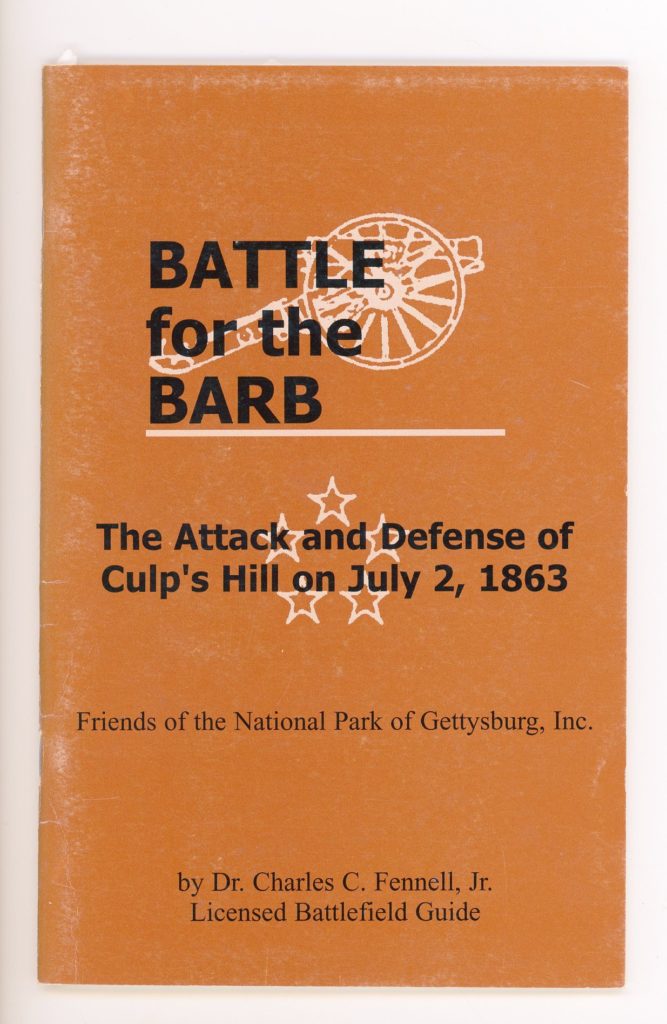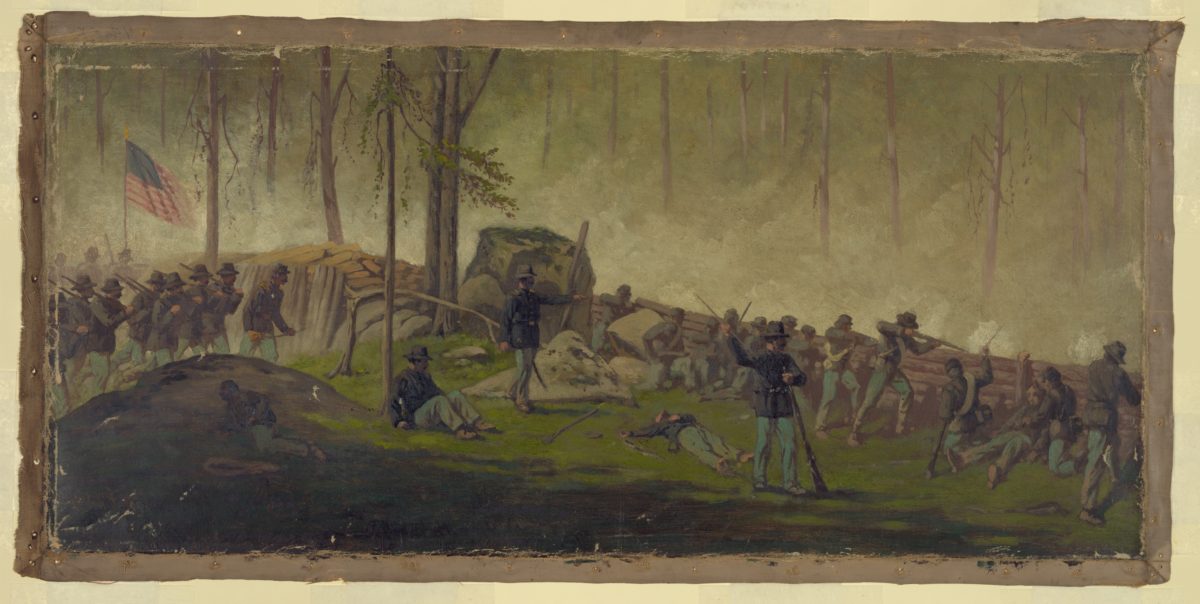For the past few decades, Culp’s Hill has been the overlooked high ground of the Gettysburg battlefield. Though referred to in the singular, Culp’s Hill actually consists of two summits. The higher peak is to the north, and separated from lower Culp’s Hill by a deep swale. Those two summits became the anchor of the right flank of the Army of the Potomac’s famous “fishhook” defense line that began at the Round Tops to the south, ran northward along Cemetery Ridge to Cemetery Hill, then curved around to Culp’s Hill.
On the evening of July 2, vicious fighting occurred on the hill as three Confederate brigades totaling nearly 5,000 men of Maj. Gen. Edward Johnson’s Division drove up the steep, rock- and tree-studded eastern face of Culp’s Hill. At the summit, hunkered down behind stout earthworks, Brig. Gen. George Greene’s 1,350 men in five New York regiments awaited the Southern onslaught.
It wasn’t supposed to be that way — at least according to the United States plan. Greene’s brigade was one of three in Brig. Gen. John Geary’s 12th Corps division that had originally held the hill. But around 7 p.m., Geary, acting under orders, took two of his brigades south to reinforce the Union lines at the Round Tops, leaving Greene’s scant brigade to hold Culp’s Hill alone.
The fact that Greene held off the attacks and saved the Union right flank from collapse is extraordinary, but let’s face it: One Joshua Chamberlain and the fight on Little Round Top has taken up most of the attention over the past decades, thanks in large part to the power of the novel “The Killer Angels” and the movie based on it.

Battle for the Barb
The Attack and Defense of Culp’s Hill on July 2, 1863
by Dr. Charles C. Fennell Jr., the Friends of the National Park of Gettysburg, Inc. 2001.
This post contains affiliate links. If you buy something through our site, we might earn a commission.
The battle for Culp’s Hill is starting to come into its own, however, thanks partially to the recent National Park Service landscape restoration that helps visitors better understand the fighting. Some historians, however, have long known that George Greene’s defense was instrumental to Union victory at Gettysburg. To help make that point, in the 2001 “Gettysburg Licensed Battlefield Guide,” Charles Fennell published “Battle for the Barb,” a concise, 35-page booklet that clearly explains the slugfest on Culp’s Hill on the evening of Gettysburg’s second day.
In clear, tight copy, Fennell breaks down the fighting, not only explaining strategy, but also giving insight into the personalities involved and their critical decisions. George Greene, rightfully so, comes out as the hero of the tale. Sixty-two years old at Gettysburg, he was the oldest Union general on the field. Foreshadowing the trench warfare of 1864, forward-thinking Greene ordered his men to construct stout earthworks out of logs, rocks and earth. That prescient decision allowed his outnumbered men to hold on.
Col. David Ireland also gets ample time in Fennell’s spotlight. Ireland’s 137th New York was on the right flank of Greene’s brigade — and in essence the right flank of the Army of the Potomac — on July 2. Nearly overrun, Ireland pulled his men back to a line of earthworks, a traverse, that ran perpendicular to the main Union line, and held off Confederate attacks by the most meager of margins. Ireland died later in the war. Would his role have been more heralded had he lived?
This great little booklet can be easily purchased from online sellers at a very reasonable price and can be read in an hour or so. If you’re like me, you’ll be amazed at how much is packed in its pages. This summer, both Little Round Top and Devil’s Den are closed to the public and undergoing landscape restoration. All the more reason to head to Culp’s Hill and spend some time wandering that high ground and admiring its monuments.
After you read this book, you’ll likely agree with the statement in “Battle for the Barb” that the United States would not have won the Battle of Gettysburg “without what Greene’s brigade did on the 2nd of July.”
historynet magazines
Our 9 best-selling history titles feature in-depth storytelling and iconic imagery to engage and inform on the people, the wars, and the events that shaped America and the world.






